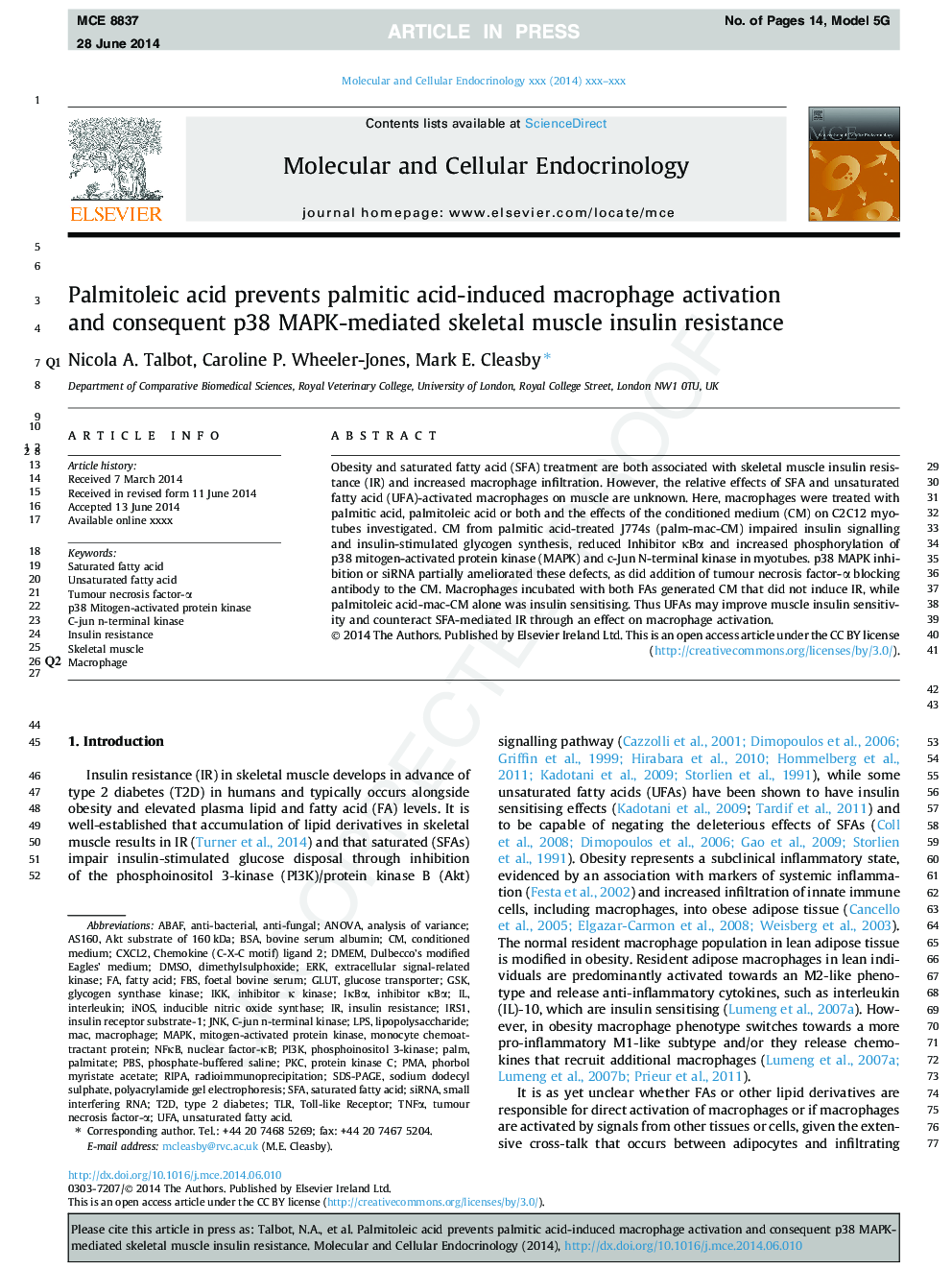| Article ID | Journal | Published Year | Pages | File Type |
|---|---|---|---|---|
| 8477163 | Molecular and Cellular Endocrinology | 2014 | 14 Pages |
Abstract
Obesity and saturated fatty acid (SFA) treatment are both associated with skeletal muscle insulin resistance (IR) and increased macrophage infiltration. However, the relative effects of SFA and unsaturated fatty acid (UFA)-activated macrophages on muscle are unknown. Here, macrophages were treated with palmitic acid, palmitoleic acid or both and the effects of the conditioned medium (CM) on C2C12 myotubes investigated. CM from palmitic acid-treated J774s (palm-mac-CM) impaired insulin signalling and insulin-stimulated glycogen synthesis, reduced Inhibitor κBα and increased phosphorylation of p38 mitogen-activated protein kinase (MAPK) and c-Jun N-terminal kinase in myotubes. p38 MAPK inhibition or siRNA partially ameliorated these defects, as did addition of tumour necrosis factor-α blocking antibody to the CM. Macrophages incubated with both FAs generated CM that did not induce IR, while palmitoleic acid-mac-CM alone was insulin sensitising. Thus UFAs may improve muscle insulin sensitivity and counteract SFA-mediated IR through an effect on macrophage activation.
Keywords
radioimmunoprecipitationPKCIKKMCP1RIPAGLUTchemokine (C-X-C motif) ligand 2IκBαGSKiNOSERKIRS1FBSCXCL2PI3KDulbecco’s Modified Eagle's mediumAkt substrate of 160 kDaPBSLPSDMEMAS160JnkBSAc-Jun N-terminal kinaseDMSOPMAMAPKNFκBbovine serum albuminFatty acidSDS-PAGEinsulin receptor substrate-1interleukinanalysis of varianceANOVAGlucose transporterdimethylsulphoxidefoetal bovine seruminducible nitric oxide synthaseConditioned mediumpalmitatenuclear factor-κBphorbol myristate acetatePhosphoinositol 3-kinaselipopolysaccharideMacrophagePhosphate-buffered salineInsulin resistanceMACPalmmonocyte chemoattractant proteinProtein kinase Cmitogen-activated protein kinaseextracellular signal-related kinaseglycogen synthase kinase
Related Topics
Life Sciences
Biochemistry, Genetics and Molecular Biology
Cell Biology
Authors
Nicola A. Talbot, Caroline P. Wheeler-Jones, Mark E. Cleasby,
